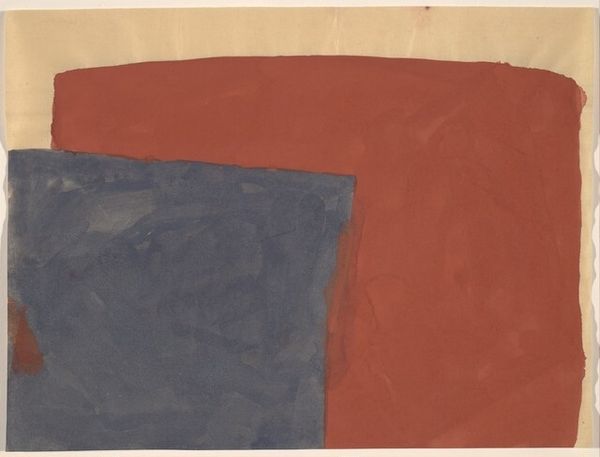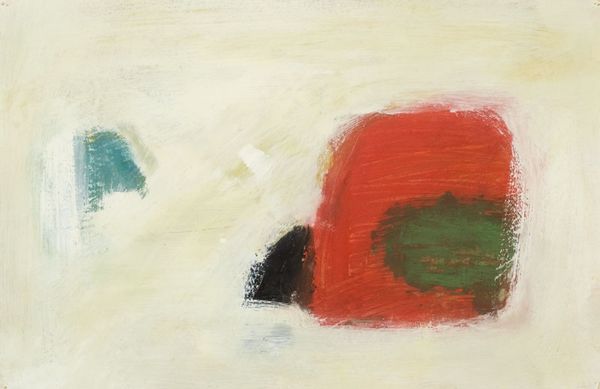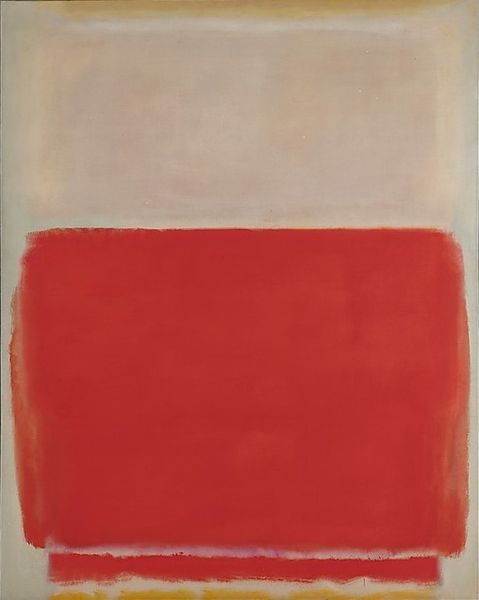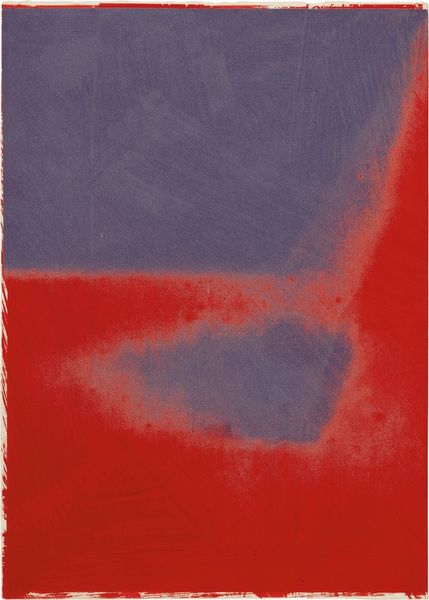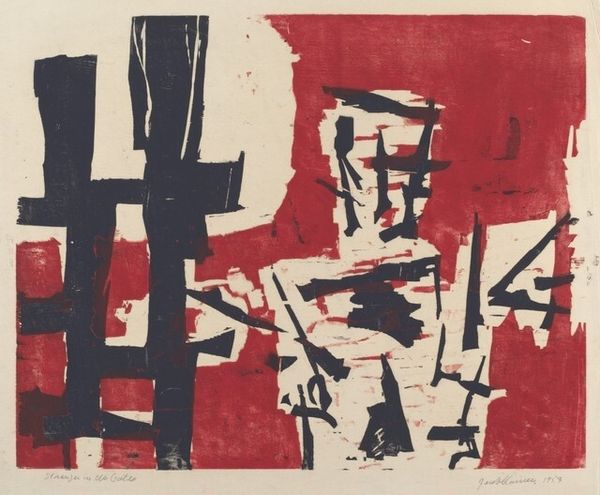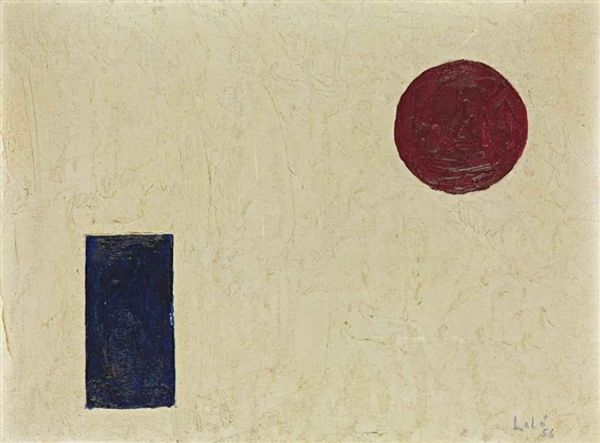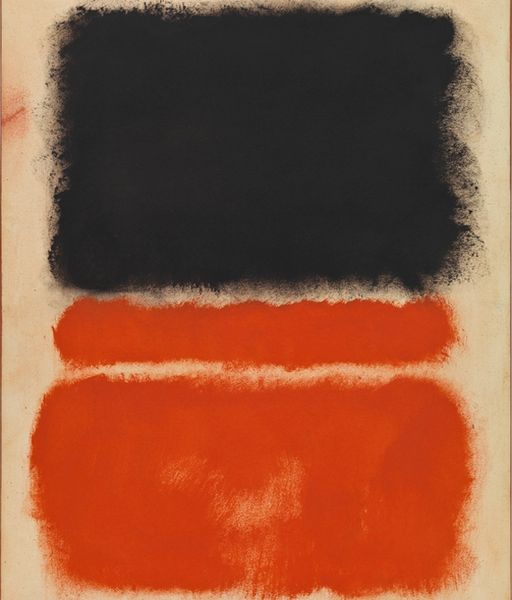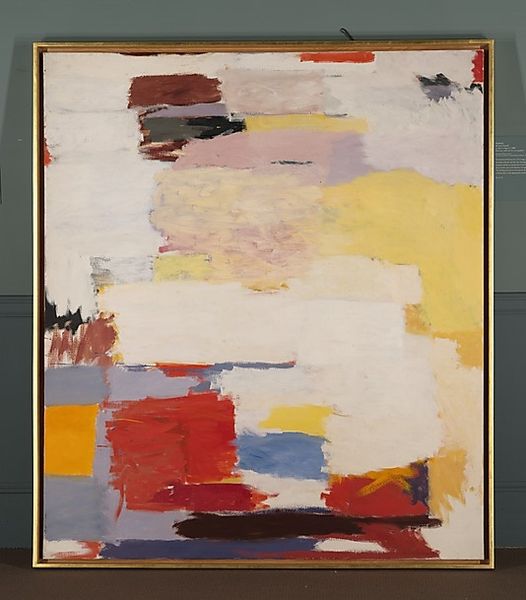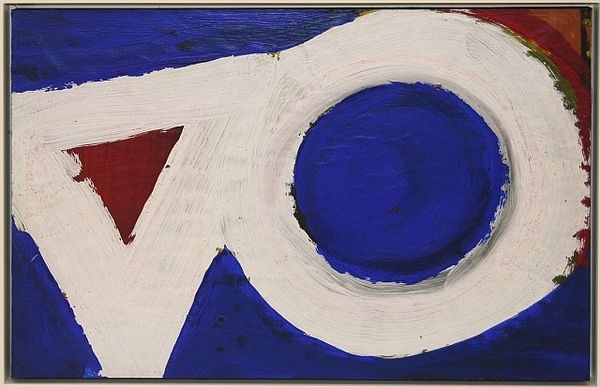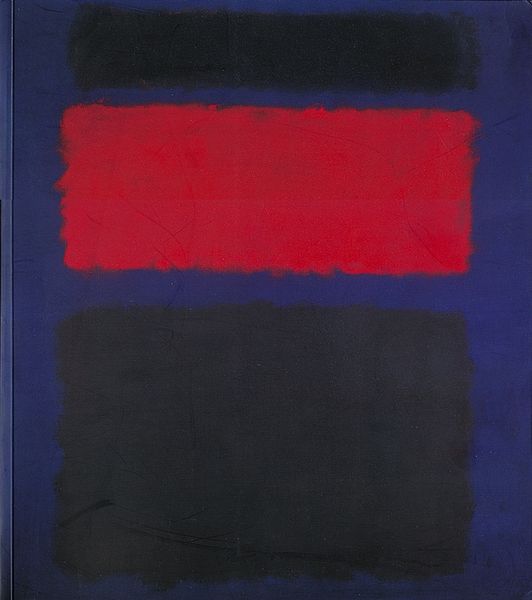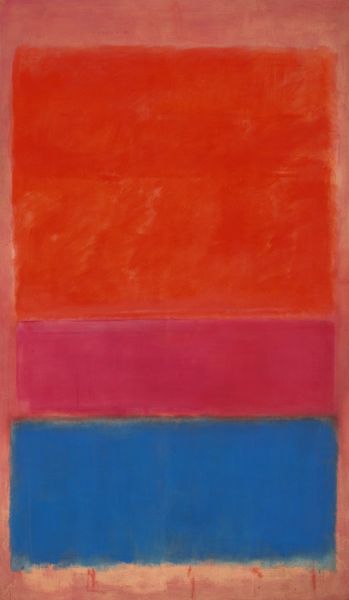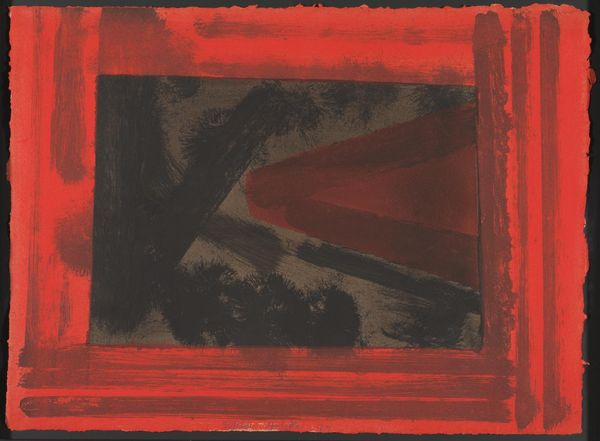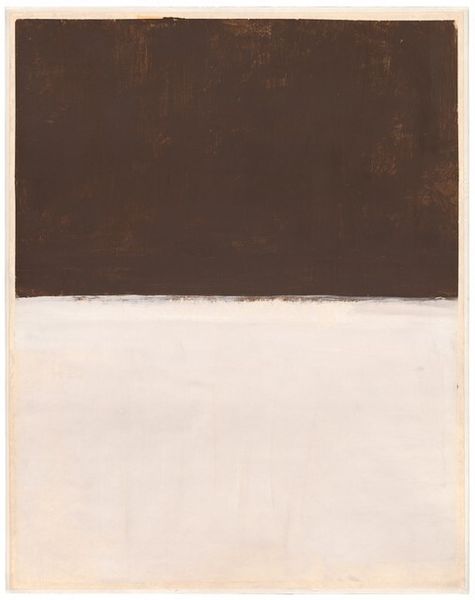
Dimensions: support: 362 x 705 mm
Copyright: © The estate of Roger Hilton | CC-BY-NC-ND 4.0 DEED, Photo: Tate
Editor: This is an Untitled work by Roger Hilton, a painting with strong vertical lines, dated to sometime in his lifetime, 1911-1975. It feels so stark and bold. What do you see in this piece? Curator: Hilton's abstraction resonates with a post-war desire for a new visual language, moving beyond traditional representation. The Tate St Ives, its location, highlights a connection to a specific artistic community. The crude application of paint seems to reject any sense of formal polish. How do you feel that contributes to its public reception? Editor: I guess it makes it feel more… honest? Like art for the people, not just the elite. I didn't think about that. Curator: Exactly. It democratizes the artistic process, challenging conventional notions of beauty. Seeing this, what did you learn? Editor: I see how it connects to a broader cultural movement, not just some random painting. It's more than just colors and shapes; it makes me think about his political world.
Comments
Join the conversation
Join millions of artists and users on Artera today and experience the ultimate creative platform.
tate 6 months ago
⋮
Although abstract, Hilton's work during the early 1950s has an impressionistic quality inspired by Bonnard's garden paintings. In 1953 Hilton's painting changed dramatically. Following a visit to Amsterdam and the Hague, where he was able to study Mondrian's painting, his ideas regarding space, form and colour were revolutionised. He ceased to regard the painting surface as if it was a window. Instead the forms are built up on it, emphasising its flatness. He also greatly simplified his use of shape and colour, restricting himself, as in this painting, to lines and squares in primary colours and black and white. These 'neo-plastic' works eliminate illusion and emphasise the physical, object-like quality of the painting. Gallery label, August 2004
